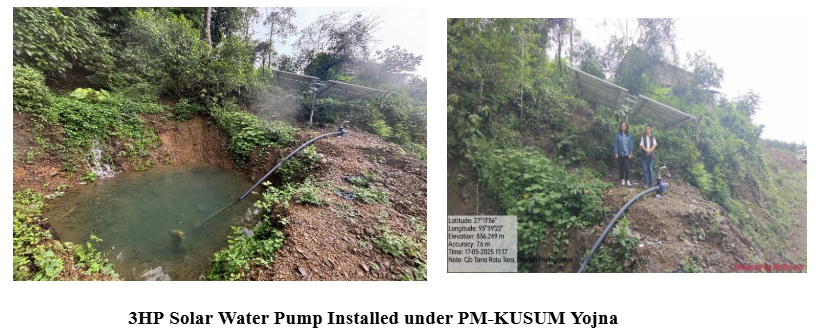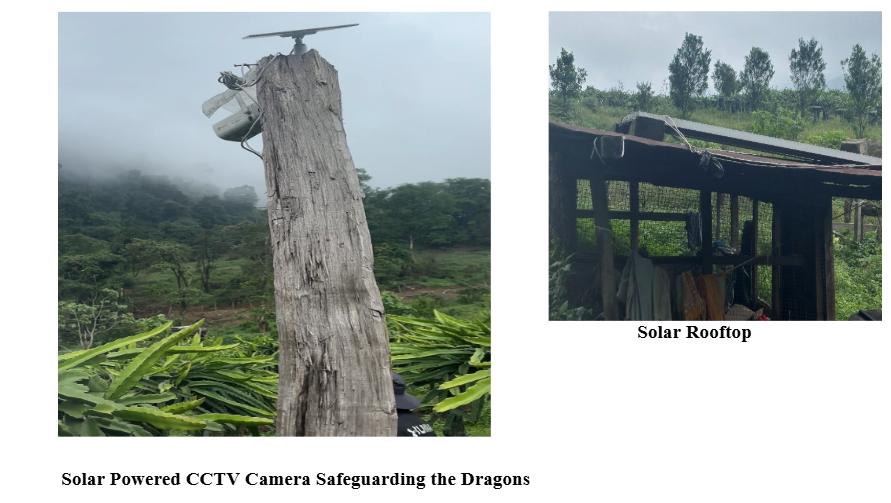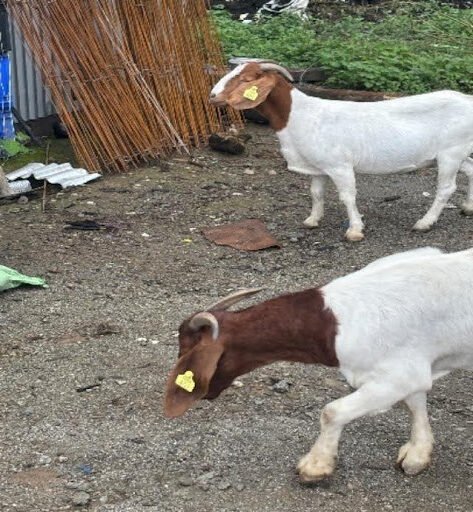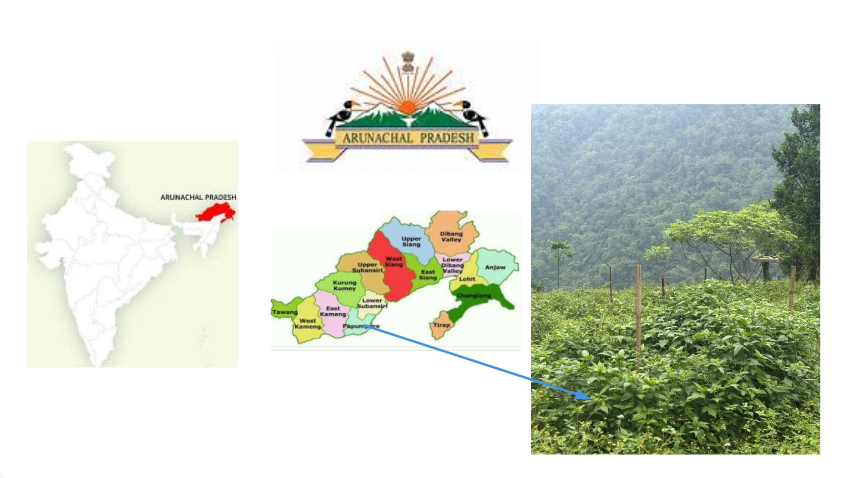1. The Turning Point: From Jhum to Bloom
In the misty hills of Toru Circle (Kheel Village), situated in the lush greens of the Sagalee division of Papum Pare district, Arunachal Pradesh, a silent revolution is blooming-not with bullets or banners, but with dragon fruit, also known as Kamalam or pitaya, flowers, and avocado saplings. Meet Tana Takum, a 47-year-old visionary farmer who has transformed the traditional Jhum cultivation into a story of sustainable, organic farming with the help of solar energy.

Once abandoned and scarred by decades of shifting agriculture, a 6-hectare patch of hilltop land is now a vibrant organic orchard of dragon fruits. Where once smoke from slash-and-burn rose, today, bees buzz around neatly aligned dragon fruit climbers and avocado saplings, a sight that attracts not just nature lovers but also agricultural officers from the state horticulture department and young entrepreneurs.
2. Rising Appetite of India for Exotic Fruits
Tana Takum’s leap into exotic fruits was not random—it was research and data-driven.
- Dragon Fruit Demand in India:
Dragon fruits are currently primarily imported in India from Vietnam, Thailand, Malaysia, and Sri Lanka and sold in Indian marketplaces. Dragon fruit production is ideally suited in the dry, frost-free agro-climatic zones of Southern, Western, and Northeastern India because it is a member of the cactus family and needs lengthy days for flowering. The red hue epicarp with white and pink pulped sub-sweet juicy pulp matrix is one of the varieties of dragon fruit that is most frequently cultivated and sold. It is a perennial fruit crop that yields quickly.
According to an article published by Mr. Suresh Sharma and his team titled, ‘Dragon Fruit: A Promising Crop With A Growing Food Market That Can Provide Profitable Returns To Farmers’, the dragon fruit was introduced to India in the late 1990s and has since been cultivated in several states, including Karnataka, Kerala, Tamil Nadu, Maharashtra, Gujarat, Orissa, West Bengal, Andhra Pradesh, and the Andaman & Nicobar Islands. The total area under dragon fruit cultivation in India is estimated to be more than 3,000 hectares. However, the majority of dragon fruits available in Indian markets are still imported. Therefore, the Indian government has recognised the potential of this crop and is taking steps to expand its cultivation.
By identifying this gap, Tana Takum planted dragon fruit saplings now fruiting in cycles and harvesting 12 tons of dragon fruit in a year, with a 48 lakh turnover in just three years, bringing him not only income but recognition from across the region.
3. Sun-Kissed Sustainability: Harnessing Renewable Energy


Tana Takum’s model farm is a living lab of green energy and smart farming. Everything here runs on the power of the sun:
- A 3 HP solar-powered water pump draws water coming from the hills, irrigating the farm using drip irrigation.
- CCTV cameras powered by mini solar panels keep a 24/7 watch on the farm for crop theft and animal intrusion.
- Streetlights around the farm and goat shelter are all solar-powered, providing safety without an electricity bill.
- A 1 kW rooftop solar panel system powers his modest farmhouse. Even the goat shed has solar-powered fans and lights.
From Nomadic to Noble: Ending the Jhum Cycle
Tana Takum’s land was once part of a Jhum cultivation cycle—a traditional slash-and-burn farming method prevalent in Northeast India that contributes to deforestation, soil erosion, and carbon emissions. However, Tana Takum’s entrepreneurial mind exploited this fallow land into a permanent orchard of exotic fruits, thus reducing forest degradation, capturing more carbon through permanent vegetation, and creating a model for climate-resilient post-Jhum farming even in the remotest location of India.
Empowering Others: Seeds of Change
Tana Takum did not stop with his success. He trained over 30 youths from his village in organic farming, dragon fruit and avocado propagation, and the use of green energy. He shared his knowledge in various workshops in Sagalee or other places in Arunachal Pradesh. He employed 10 full-time and 15 seasonal workers, including women, creating livelihoods in his community.
Goats on GPS: A Smart Twist
His herd of 38 goats, vital for manure and meat, wanders the hills freely but never gets lost; each wears a geo-tagged collar that connects to Tana Takum’s smartphone. A simple app alerts him if a goat strays beyond the 2-kilometer perimeter.

Conclusion: The Farmer of the Future
Tana Takum is not just growing fruits; rather, he is growing hope, resilience, and a green economy. His work embodies a sustainable trinity of smart energy, healthy land, and community empowerment. Stories like Tana Takum’s serve as a powerful inspiration for many farmers across Arunachal Pradesh, where farming is often limited to seasonal rice cultivation for household needs. His successful transition to cultivating high-value crops like dragon fruit, combined with the use of solar-powered government schemes like PM-KUSUM, demonstrates the potential of sustainable, income-generating agriculture. Tana Takum’s example shows that with the right tools and mindset, even small farmers can become climate warriors and catalysts of rural transformation.
In a world searching for climate warriors, Tana Takum is a superhero in his own way, who does not need a cape but just needs real and smart tools, such as solar pumps, saplings, and a purpose.
The views and opinions expressed here belong solely to the author and do not reflect the views of BlueKraft Digital Foundation.







